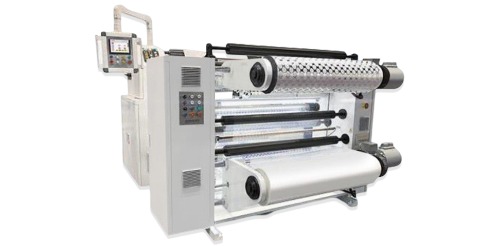What is the embossing mechanism used by holographic embossing machines?
The embossing mechanism used by holographic embossing machines involves a specialized process to transfer intricate holographic patterns onto a substrate, typically for security, decorative, or branding purposes. Here’s a detailed explanation of the mechanism:
1. Master Hologram Creation
Process:The first step in holographic embossing involves creating a "master" hologram. This master is an original, high-resolution holographic image or pattern that serves as the template for embossing.
Techniques:Laser Interference: A laser beam is split into two parts—one part illuminates the object, and the other serves as a reference. The interference pattern created captures the 3D information.
Electron Beam Lithography: Used for creating highly detailed holograms by focusing an electron beam on a surface coated with a sensitive material to produce the holographic pattern.
Materials:The master hologram is typically made on a photosensitive material or a metal surface that can capture the intricate details of the hologram.
2. Embossing Die Production
Process:The next step is to create an embossing die, which is a metal mold that carries the negative image of the master hologram. This die will be used to imprint the holographic pattern onto the substrate.
Techniques:Electroforming: The master hologram is coated with a layer of metal, usually nickel, through electroplating. This metal layer is then separated from the master to form a durable embossing die.
Chemical Etching: The metal surface is etched to create the holographic pattern, though this method is less common due to the precision required.
Materials:Common materials for embossing dies include nickel, steel, or other metals that can withstand the pressures of the embossing process.
3. Substrate Preparation
Process:The substrate, typically a plastic film, metal foil, or paper, is prepared for embossing. The surface may be coated with a thermoplastic or other material that can receive the embossed holographic pattern.
Materials:Substrates vary depending on the application and may include polyester films, metallic foils, or specialized holographic films.

4. Embossing Process
Mechanism:The holographic embossing process involves pressing the embossing die against the substrate under high pressure and temperature. This transfers the holographic pattern from the die to the substrate.
Steps:Heating: The substrate is heated to soften the surface material, making it more receptive to the embossing process.
Pressing: The heated embossing die is pressed onto the substrate. The combination of heat and pressure causes the surface of the substrate to deform, imprinting the holographic pattern.
Cooling: The embossed substrate is then cooled, solidifying the pattern onto the surface.
Equipment:
Embossing Press: This machine applies precise pressure and heat to transfer the holographic pattern.
Roll-to-Roll Systems: For continuous production, substrates move through a series of rollers that apply the embossing die under controlled conditions.
5. Hologram Fixation
Process:After embossing, the holographic pattern needs to be fixed or stabilized to ensure it remains intact and durable.
Techniques:
UV Curing: A UV-curable adhesive layer may be used to secure the holographic pattern, ensuring it is resistant to wear and environmental factors.
Lamination: The holographic substrate might be laminated with additional layers for added protection and durability.
6. Quality Control and Finishing
Process:The final embossed holographic product undergoes quality control to ensure the pattern is accurately transferred and meets specified standards.
Techniques:
Inspection Systems: Automated systems inspect the holograms for defects or inconsistencies.
Testing: Various tests, such as scratch and durability tests, are conducted to verify the quality and longevity of the holographic embossing.
Finishing:
The holographic substrate may be cut or formed into final products, such as labels, packaging materials, or security seals.
Key Advantages of the Embossing Mechanism:
High Detail Reproduction: The process allows for the precise transfer of complex holographic patterns.
Durability: The resulting holograms are robust and can withstand handling and environmental exposure.
Versatility: Applicable to a wide range of substrates and industries, from security applications to decorative packaging.
This mechanism is integral to producing high-quality, secure, and visually appealing holographic products that are used across various industries for both functional and aesthetic purposes.
of interest


 中文简体
中文简体 Español
Español

















